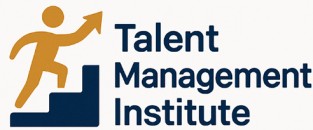
Understanding the Talent Acquisition Landscape
Grasping the Foundations of Talent Acquisition
Understanding the talent acquisition landscape is pivotal in mastering the intricacies of securing top talent. The current market presents challenges and opportunities for companies seeking to enhance their human resources strategies. By evolving with the industry's dynamics, organizations can leverage effective recruiting and staffing solutions to attract and retain top talent. The process of talent acquisition encompasses several components, all aimed at optimizing the hiring system. Staffing solutions such as executive search and recruitment process outsourcing (RPO) facilitate a seamless acquisition of talent by streamlining efforts and focusing on the long-term alignment of candidates with organizational goals. These methods offer flexibility in hiring, whether through a contract hire or a full-time basis, and support diverse human resource needs. Moreover, integrating sound practices in talent acquisition can bring flexibility and enhance the overall recruitment process. Companies must be able to adapt their approach to the fluctuating staffing demands, including the outsourcing of certain functions such as payroll solutions or contingent workforce management. This adaptability not only supports efficient talent acquisition but also ensures the company is positioned to bring in employees who contribute meaningfully to the team. Moreover, the convergence of technology and talent acquisition is undeniable. Leveraging advanced recruiting tools and platforms permits firms to enhance candidate engagement and streamline the hiring stages. This utilization of technology in recruitment can significantly aid in the meticulous execution of hiring plans, ensuring that the open positions are filled with the best-suited candidates. For more insights on how to navigate this landscape effectively, consider exploring effective demand generation.Building a Strong Employer Brand
Enhancing Company Visibility to Attract Top Talent
A strong employer brand is essential for attracting top talent in today's competitive recruitment landscape. It not only makes an organization appealing to potential candidates but also strengthens its market position. Creative strategies are instrumental in building and maintaining this brand. Engage your current employees and candidates by sharing authentic testimonials and success stories. This provides a genuine insight into what it’s like to work with your organization. Transparency in communication will enhance trust and confidence among potential talent, making your company appear more approachable and credible.Leveraging Social Media Platforms
In the digital age, enhancing your company's presence on social media is crucial for talent acquisition. Utilizing platforms like LinkedIn, Twitter, and Instagram effectively allows you to engage with a wider audience. This expands your reach and helps you target specific talent pools that align with your company's values and mission. Building an effective social media team is a key strategy for managing these platforms. Their role is to develop content that resonates with potential candidates and reflects your company's culture and values. Creating compelling content and engaging posts can significantly boost your employer brand, making it easier to attract and retain top talent. For an in-depth guide, check out this article on Building an Effective Social Media Team.Implementing a Comprehensive Recruitment Process
A well-structured recruitment process is vital for attracting and retaining top talent. This involves a systematic approach to identifying talent acq solutions that cater to your company's specific needs. Recruiting requires a thorough understanding of not only the open positions within your organization but also how those positions fit into the long-term goals. Outsourcing recruitment process operations (RPO) can be beneficial in bringing much-needed flexibility. RPO solutions flexibility allows a company to manage fluctuating hiring needs efficiently—from peak recruitment periods to slower hiring days. This approach ensures that your team is not overwhelmed and can focus on acquiring top-tier candidates consistently. In alignment with these practices, fostering diversity and inclusion further contributes to a robust employer brand. Demonstrating a commitment to varied perspectives and backgrounds enhances your brand’s attractiveness to prospective hires, promoting a loyal and dynamic workforce in the long run. Emphasizing these strategies in talent acquisition ensures your company remains competitive and appealing to potential candidates, establishing a strong foundation for future growth.Leveraging Technology in Recruitment
Harnessing Technological Advancements in Recruitment
Leveraging technology in recruitment isn't just an option for businesses today; it's a necessity. As organizations aim to secure top talent and streamline their recruitment processes, the integration of innovative tools and platforms plays a crucial role. Doing so ensures the efficiency and success of talent acquisition strategies.One of the primary ways technology aids in recruitment is by enhancing the recruitment process. By utilizing advanced applicant tracking systems (ATS), organizations can efficiently handle large volumes of candidates, while ensuring that no promising talent is overlooked. These systems assist hiring managers in maintaining a seamless process from resume submission to the final interviews, drastically reducing the time and cost associated with the hiring process.
Additionally, the rise of AI in staffing solutions introduces sophisticated algorithms capable of screening resumes, identifying keywords, and even predicting the cultural fit of candidates. This automated analysis aids in reducing the potential biases during the recruitment process, aligning with the drive towards greater diversity and inclusion in talent acquisition.
Implementing virtual interview platforms has also revolutionized the recruitment landscape. Particularly for remote or global talent acquisition, these platforms allow for face-to-face interactions without the logistical challenges of in-person interviews. This not only improves the candidate experience but also increases the company's flexibility in engaging with diverse candidates across different geographical locations.
Furthermore, data analytics offers invaluable insights into recruitment strategies. By tracking metrics such as time-to-hire, source of hire, and employee turnover rates, companies can fine-tune their processes to optimize recruitment outcomes. This ensures that the organization remains competitive in acquiring and retaining top talent.
For those interested in exploring the fascinating intersection of technology and recruitment further, opportunities abound for professional development and learning. Consider business internships that provide hands-on experience with talent acquisition platforms and technologies. Exploring business internships can offer young enthusiasts insights into the dynamic world of recruiting.
In conclusion, the integration of technology in talent acquisition not only enhances the recruitment process but also aligns with the broader business goals of efficiency, diversity, and strategic growth. Keeping up with the latest technological advancements is key to maintaining a competitive edge in acquiring the best candidates.
Crafting an Effective Candidate Experience
Enhancing the Applicant Journey with Seamless Experiences
Creating an effective candidate experience involves more than simply managing applications. Every interaction with potential hires should reflect the company's values while maintaining a seamless and engaging process. Implementing a structured recruitment process can greatly impact how candidates perceive your company. This not only includes the initial contact but also how you handle interviews and onboarding. Ensuring this process is smooth and transparent can prevent bottlenecks and ensure top talent recognizes your company as a preferred workplace.- Communication: Regular updates keep candidates informed and engaged. This approach is vital for managing candidates throughout the hiring process.
- Feedback: Offering constructive feedback, even to unsuccessful candidates, ensures a respectful relationship and enhances your company's reputation.
Diversity and Inclusion in Talent Acquisition
Promoting Diversity and Inclusion in Hiring
The push for diversity and inclusion in hiring has become a cornerstone of modern talent acquisition. Companies are increasingly recognizing that a diverse workforce not only drives innovation but also enhances company reputation and employee satisfaction. To succeed in this endeavor, executives and recruiting teams need to prioritize these values throughout the acquisition process. Fostering diversity must start with understanding the current hiring landscape and identifying any biases that may exist within existing recruitment processes. It's essential to develop diversity-focused staffing solutions, allowing companies to reach a more varied candidate pool. This can involve modifying job descriptions, ensuring they appeal to a broader audience, or expanding the platforms on which open positions are advertised. Additionally, leveraging technology in recruitment can support diversity efforts. Implementing AI-driven recruiting tools helps eliminate unconscious bias, ensuring a fairer selection process. Yet, technology alone is not the complete solution. Human judgment remains crucial in understanding the nuanced qualifications of top talent. Creating an inclusive environment requires buy-in from all levels of management. Executives, hiring managers, and HR professionals should be trained to handle diversity-related issues and promote an inclusive company culture. Moreover, share insights and stories from existing employees to make prospective candidates feel connected, valued, and understood from the start. Be proactive in developing partnerships and networks that will introduce you to diverse talent pools, such as university outreach programs, diverse job fairs, or industry-specific groups. Bringing contract employment or payroll solutions into play also offers solutions flexibility, enabling you to include contingent employees, which further enhances diversity within the workforce. In today's competitive market, embracing diversity is not just a moral imperative but also a strategic advantage. By fostering an inclusive and diverse workplace, businesses are better equipped to meet the challenges of the modern hiring landscape, creating a more adaptable and innovative team.Measuring Success in Talent Acquisition
Evaluating the Effectiveness of Your Talent Acquisition Strategy
In the competitive world of talent acquisition, measuring success is crucial to ensure that your strategies are effective and align with your company's goals. A robust evaluation process helps in identifying areas for improvement and optimizing the recruitment process.
Key Performance Indicators (KPIs) to Track
- Time to Hire: This metric measures the efficiency of your recruitment process. A shorter time to hire indicates a streamlined process, reducing the risk of losing top talent to competitors.
- Quality of Hire: Assessing the performance and retention of new employees helps determine if your talent acquisition strategies are attracting the right candidates.
- Cost per Hire: Understanding the financial investment in acquiring new talent is essential. This includes advertising, staffing solutions, and payroll solutions costs.
- Candidate Experience: As discussed earlier, a positive candidate experience can enhance your employer brand and increase the likelihood of attracting high-quality candidates.
- Diversity Metrics: Tracking diversity and inclusion efforts ensures that your recruitment process is inclusive and aligns with broader company values.
Utilizing Technology for Data-Driven Insights
Leveraging technology in recruitment, as previously mentioned, can provide valuable data-driven insights. Recruitment software and analytics tools can help track these KPIs effectively, offering a clear picture of your talent acquisition performance.
Continuous Improvement and Adaptation
Regularly reviewing and analyzing these metrics allows your team to adapt strategies and improve processes. Whether it's adjusting your employer branding efforts or refining your candidate experience, continuous improvement is key to long-term success in talent acquisition.
By focusing on these metrics and utilizing technology, companies can ensure their talent acquisition strategies are not only effective but also adaptable to the ever-changing landscape of recruiting and hiring.













